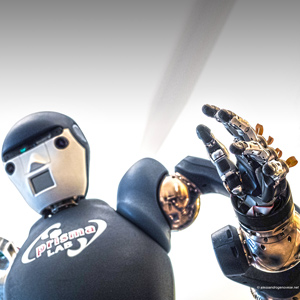
The second part of the Robotics Foundations course covers planning and control. Suitable interpolation techniques are presented to plan trajectories in either joint or operational space. For controlling a robot in the free space, motion control strategies can be either decentralized or centralized. The former leads to independent joint control which treats nonlinear dynamic couplings as disturbance, while the latter is based on the robot dynamic model. PD control with gravity compensation and inverse dynamics control are presented. Operational space control is then introduced as a premise to controlling a robot interacting with the environment. Both indirect and direct force control schemes are developed for constrained motion control. The visual servoing approach is adopted to integrate information about the objects present in the scene into the control loop, where the resulting schemes can be of three types: position-based, image-based, or hybrid. The last part of the course is devoted to mobile robots. Kinematic models of simple vehicles are presented, along with trajectory planning methods which have to properly account for the nonholonomic constraints. The motion control problem is tackled with reference to the trajectory tracking task. Odometric localization techniques are finally presented for practical implementation of feedback control schemes.
The course is based on the widely-used textbook: B. Siciliano, L. Sciavicco, L. Villani, G. Oriolo, Robotics: Modelling, Planning and Control, Springer, London, 2009, ISBN 978-1-84628-642-1.
- Docente: Bruno Siciliano
